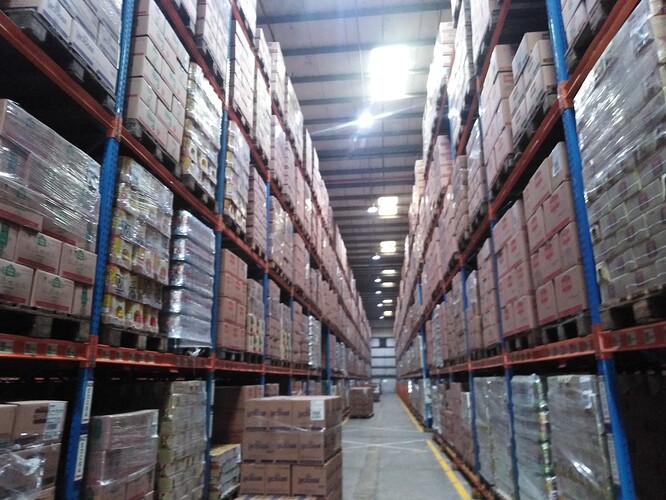Hi, I am trying to implement indoor navigation for a warehouse consisting of so many pallets (loaded with polyethylene bottles filled with liquid etc). Placing anchors at distance of around 15 meters and using Pans 2 shows a high drift in location accuracy. Sometimes 5-7 meter drift and that’s huge. It’s a typical warehouse consisting of metal recks.
Is there a way using Pans 2, can we improve NLOS conditions by configuring NTM_1, NTM_2 settings or is there any way you suggest? BTW anchors are placed at the ceiling (~10 meters above ground) dangling down around 35 cm.
You have a very difficult application, an “urban canyon” in GPS speak.
The liquid materials are essentially opaque to UWB signals. The aisle width is quite narrow as well. This creates deep canyons throughout your environment where anchors in neighboring rows will not contribute to accurate location, or worse, they will push your location to wrong results as they report multipath results instead of first path.
I think it will take some tuned location code to get good results in this space. Here are some specific suggestions:
The only anchors that will hear the tags well will be those in each aisle. Place anchors about every 10 meters and zig zag them left/right to about the edge of the racks (about 3-4 meters). This will aid in left/right location. The goal is to get at least 3 good anchor hits, maybe up to 5, for each tag location. A side effect of this arrangement is that you will get good Z axis measurements given your high anchors. If 10 meter spacing doesn’t produce good results, try more anchors. There is an anchor count that will work, though it may turn out to be uneconomic for your application.
You need to use a ranging algorithm, one based on TWR data and not a TDoA style, as you need the best results with the fewest anchors in range and TDoA doesn’t do that. This consumes more air time, more battery, and reduces capacity due to the multiple packets required per location, but it is required unless you want to go crazy with anchor density.
You need to suppress (or at least deweight if the location engine supports it) anchors in neighboring aisles from being in the solution. The challenge is figuring out which ones to take out of the solution and which to keep. This is complex and can be a combination of the signal metrics and the layout of the anchors. A generic location engine won’t cut it.
Put anchors at intersections so they serve both the aisles and the cross travel ways.
Tracking the forklift will produce much better results than tracking the pallets due to better tag location (typically on top of roll cage). If the location engine supports it, locking the Z axis height in the solution (since fork lift roll cages tend to be at a known height) serves as another virtual anchor and improves the location.
I apologize that I can’t provide you magic numbers to make your setup work, I just don’t think they exist due to the difficulty of the application space. A good first step would be to outfit just one aisle with zig zag anchors (turn others off) and see if that produces acceptable results. That will at least tell you what anchor density you need for a given output, and that some method to subselect anchors will work.
Mike Ciholas, President, Ciholas, Inc
3700 Bell Road, Newburgh, IN 47630 USA
mikec@ciholas.com
+1 812 962 9408
Hi, Hamid. Are you using multiple technologies for location to get to the granular location or just one, i.e., UWB? The “opaque” problem Mike C discussed in his response will be an issue for other technologies, e.g., WiFi, BLE, UHF RFID. Even a combination of these technologies may not help and the solution may have to be some type of an inference.
@hamid159 In TWR you could observe drift even if anchors from neighboring aisles, which might not give you correct ranging distance because of multipath (and hence the drift), aren’t contributing to the position.
The drift could also happen because of DOP(https://en.wikipedia.org/wiki/Dilution_of_precision_(navigation) ) if your anchors, which are contributing for positioning, are arranged in a straight line in the aisle. Hence as @mciholas suggested, you’ll need to arrange your anchors in zig-zag manner in a given aisle.
Decawave’s application has nice grid view and position log features to identify how the change in anchor arrangement is playing out for you.
